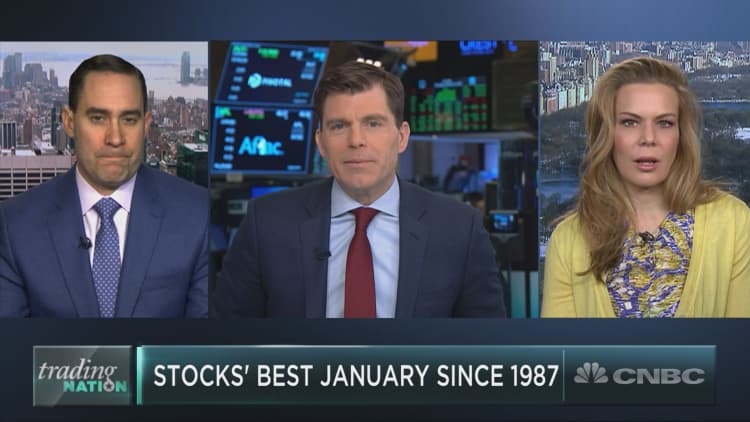
It seems that December and its dramatic drop for stocks — it was the worst December since 1931 — is firmly in the rear-view mirror.
The S&P just posted its best January since 1987. While the market's whipsaws may leave some investors exhausted and wanting to stick to the sidelines, one market watcher says there's more upside ahead and now's the time to buy.
"A lot of what happened in the fourth quarter of last year was just massive fear, and so we've seen that sort of being flushed slowly out of the market. So far this recovery makes sense to us and we do see potential for further appreciation," S&P Global's Erin Gibbs said Thursday on CNBC's "Trading Nation."
The S&P rose nearly 8 percent in January, lifted by better-than-expected earnings and a dovish tone from Federal Reserve chairman Jerome Powell.
Gibbs believes investors once again have an appetite for stocks, but she's not predicting an outsized gain for the year.
"Certainly not what we may have seen in the past couple of years," she said, referring to her expectations for the S&P this year. "Even when you've got mid-single digits on both your top and bottom lines it tends to be a nice, healthy year, and so we see this as continuing."
Instinet's Frank Cappelleri, on the other hand, is more skeptical. He believes two key factors could spell trouble ahead: a slowdown in small caps and a surge in gold.
The S&P 600, which tracks small-cap U.S. companies, outperformed the S&P 500 last month, but Cappelleri points out that this isn't the whole story. The small caps index is still 18 percent from its recent high level, compared with 9 percent for the S&P 500.
He also looks at the advance/decline lines for both indexes to gauge overall sentiment about the markets. Cappelleri uses it to show that although the more speculative small-cap index is outpacing its larger counterpart for the year, its rally since its lows hasn't been as strong.
Buying in small caps can indicate that investors have a higher tolerance for risk, so a slowdown in overall performance could mean investors might be looking to rotate out of stocks and into "safer" trades.
Along that line, Cappelleri suggests that gold's move higher could be another warning sign for stocks.
"Since August of last year, it has really been the most persistent asset class out there," said Cappelleri. "Think about what's happened during that time. Gold started rallying before the market crash, during, and now after. It really hasn't lost a step. So it's kind of something we haven't seen in a long time, when you have both equities and gold going up together."
The commodity, often considered a safety trade, surged to its highest level since April during Thursday's trading session. It closed out January with a 3 percent gain and its fourth-straight positive month.
"Could be an isolated event, could mean something more," Cappelleri said of the asset classes moving in lockstep, adding that it's something to "focus on" going forward.
Correction: This story was revised to correct that Cappelleri's 18 percent comment was referring to the S&P 600's decline from its recent high.






